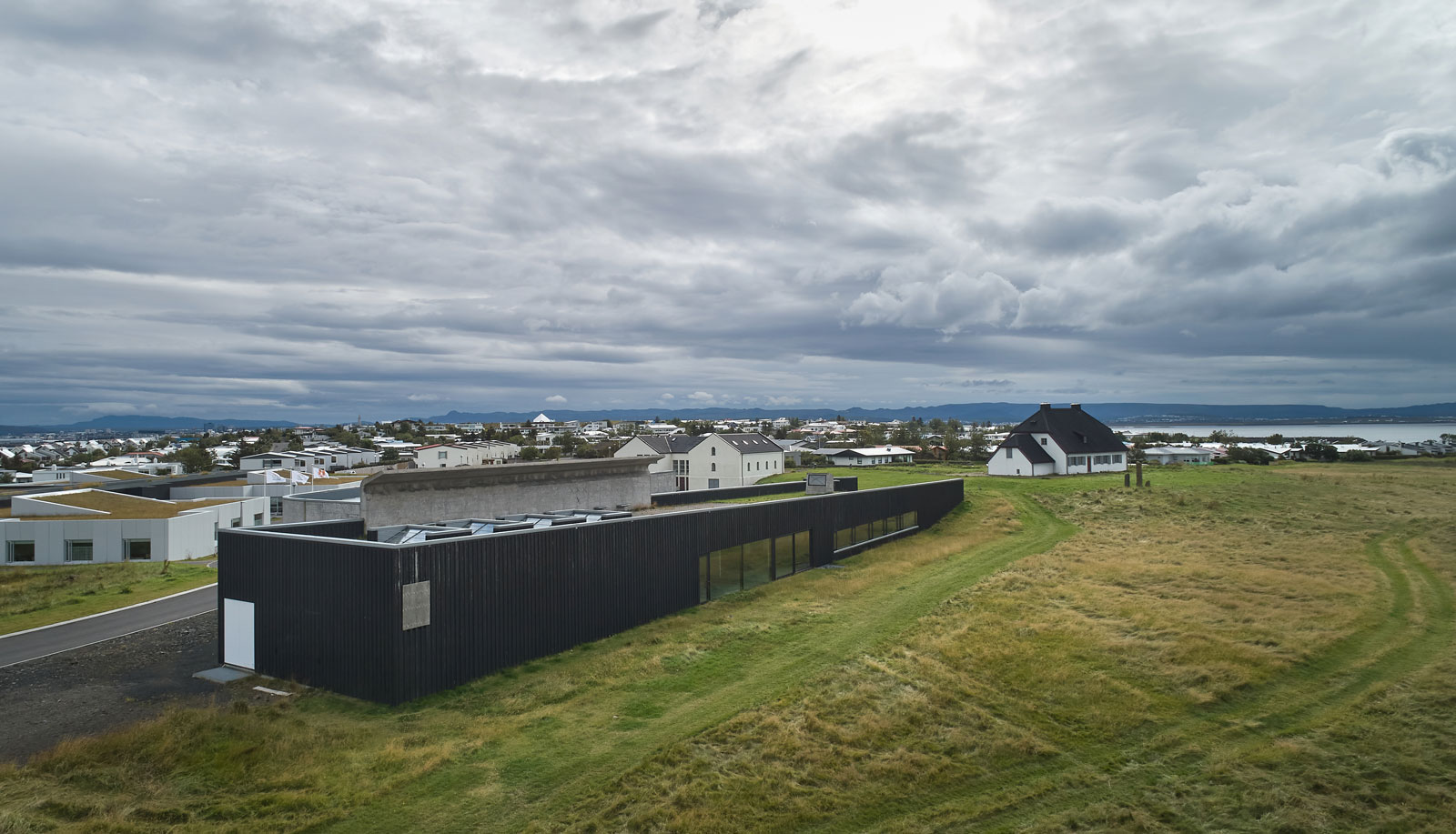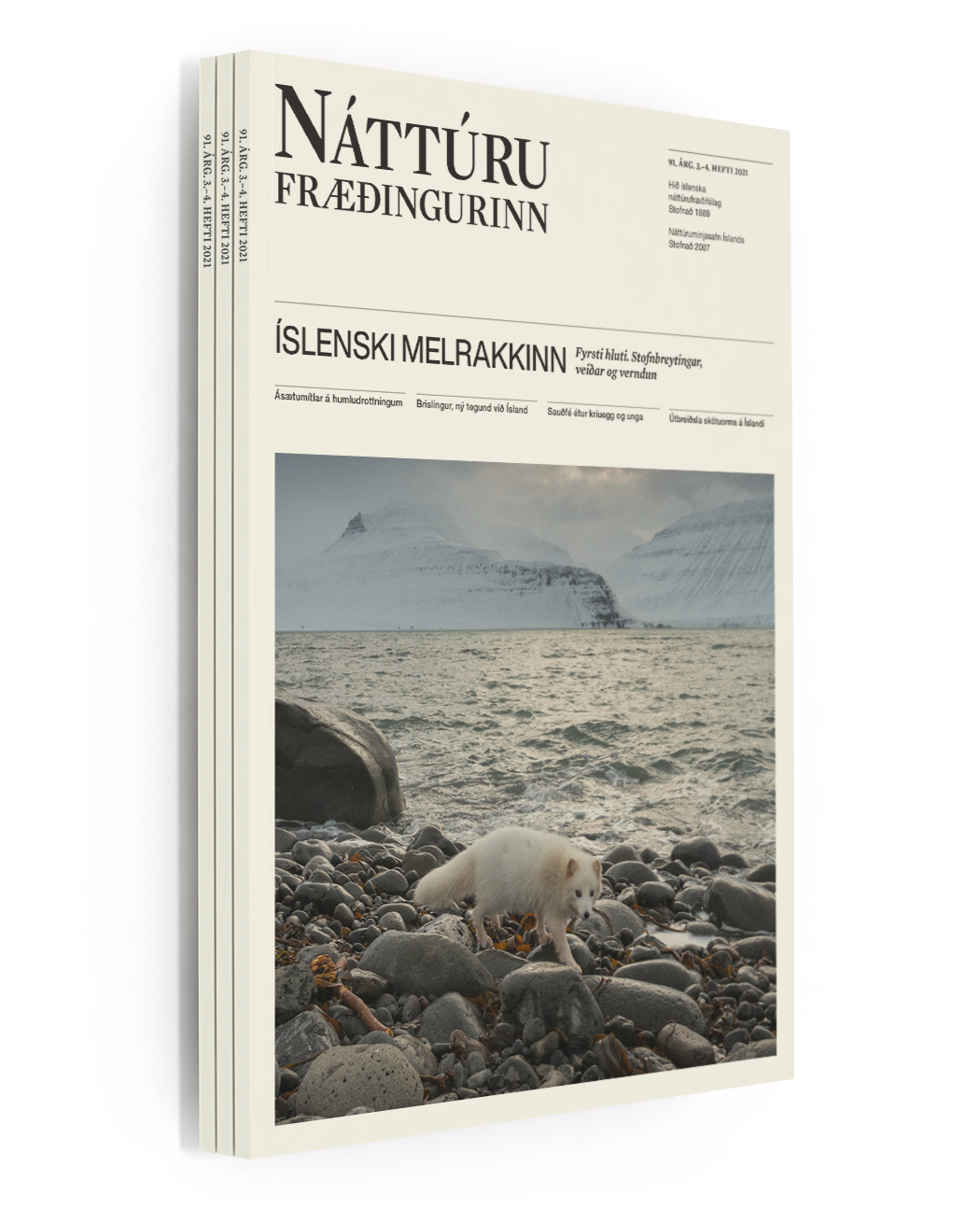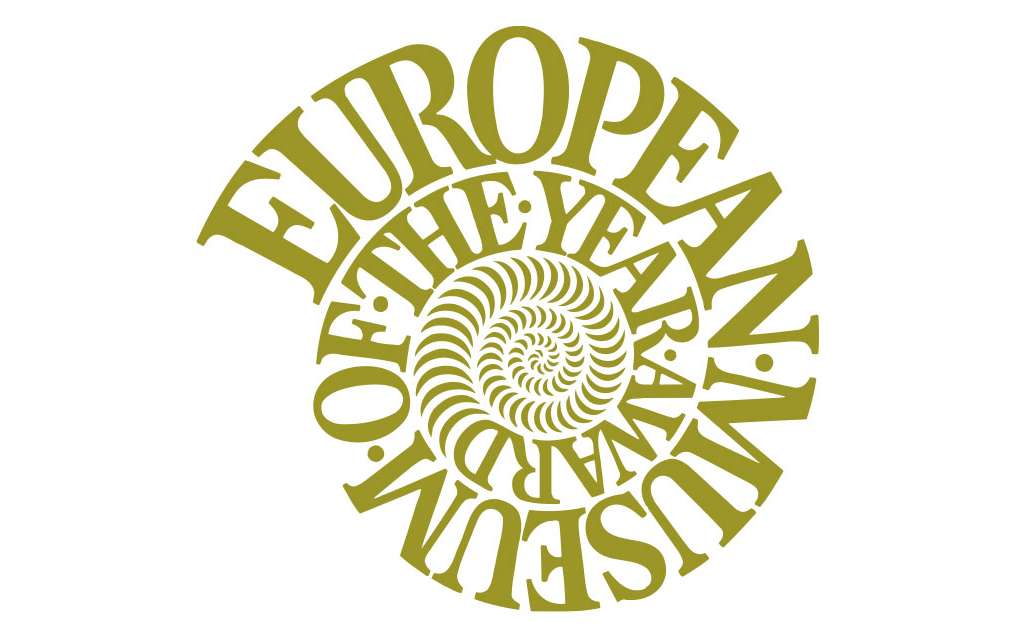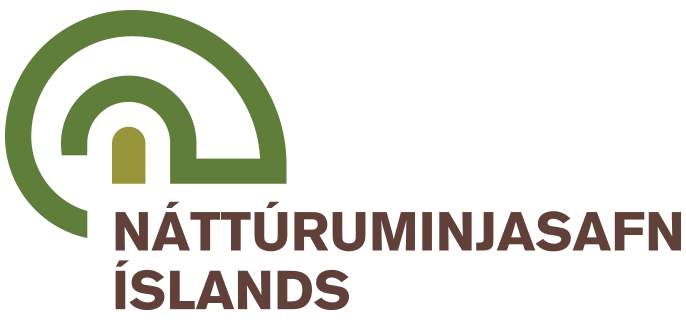The Icelandic Museum of Natural History (Icel. Náttúruminjasafn Íslands) is the property of the Icelandic state, a public institution appertaining to the Ministry of Culture and Commerce. The Museum is one of three Central Museums in Iceland along with The National Museum of Iceland and The National Gallery of Iceland.
The primary role of the the Icelandic Museum of Natural History is to communicate information and knowledge on nature in Iceland in local and global context, through exhibitons and other means, inform about natural history of the island, use of natural resources and nature conservation. Research is run mainly in mediaevel natural history, natural moral pilosophy, paleobiology and evolutionary and freshwater ecology, with emphases on biodiversity and climate change. The ultimate aim af the Museum‘s activity is to promote conservation of cultural and natural heritage in Iceland and provide access to the general public in order to ensure sustainable use of nature and enhance happiness and quality of life.
The Museum shares information and knowledge on nature by running exhibitions, digital publication and in print, and by participation and presentation at conferences, symposiums and in the media.
The Icelandic Museum of Natural History was established in 2007, but its roots lie way back to 1887–1889, when The Icelandic Natural History Society (Icel. Hið íslenska náttúrufræðifélag) was founded. One of the main objectives of the Society, stated in its founding act and still relevant, is to set up a natural history museum with ambitious exhibition facilities for the general public. The opening of the special exhibition Water in Icelandic Nature in the Pearl building 1. December 2018, was the first exhibition designed and run by the Museum on its own.

The Museum will move into new headquarters in 2023–24, The House of Nature in Nes, situated in the greater capital area, Seltjarnarnes, in near proximity to the North-Atlantic ocean, nature protected areas and the seashore, as well as interesting cultural and archeological sites. Work on a new permanent exhibition is in progress, focusing on biodiversity, with emphases on the ocean, marine ecology and the effects of climate change.
The new headquarters will be located next door to Nesstofa, built in 1767 for the nation´s first director of health, Bjarni Pálsson.
Nesstofa is now the symbolic site of Danish-Icelandic scientific collaboration in past, present and future, and in that conjuction, the Museum will set up and run an exhibition in Nesstofa based on the Travelbook (Icel. Ferðabók) by Bjarni Pálsson and Eggert Ólafsson, first published in 1772. The Travelbook was the result of extensive documentation and collection of information and data on nature and culture obtained by Bjarni and Eggert during fieldtrips in 1752–57.
Dr. Hilmar J. Malmquist was appointed director of the Icelandic Museum of Natural History in September 2013 for the period 2013–18 and again for the period 2018–23.
PUBLICATION
The Icelandic Museum of Natural History publishes the periodical The Naturalist (Icel. Náttúrufræðingurinn) along with The Icelandic Natural History Society. The Naturalist has been published by the Society since 1931, but from 2014 in association with the Museum. There are four issues in each volume. It is published in Icelandic, but summaries and text to figures and tables are in English.
Access to The Naturalist is open at www.timarit.is, served by the National and University Library of Iceland.
Editor of the journal is Margrét Rósa Jochumsdóttir, at the Icelandic Museum of Natural History. For subscription and other information about the periodical contact the editor at (+354) 577 1802 and margret.r.jochumsdottir@nmsi.is.
See also website of The Icelandic Natural History Society for more information about the Society.

EXHIBITIONS
Water in Icelandic Nature – the exhibition of the Icelandic Museum of Natural History in the building Perlan, exhibiton center, in Reykjavík, is an independent part the nature exhibitions of Perla norðursins ltd. “Wonders of Nature”.
Water in Icelandic Nature
Water – all originated from outer space – is the foundation of life on Earth. Iceland is exceptionally rich in freshwater, a very prominent feature of the landscape and one of Iceland´s most precious natural element providing multitudes of services. There are glaciers and diverse wetlands, numerous lakes, rivers and waterfalls, clean and wholesome, hot and cold, silted glacial water, crystal clear spring fed water and direct runoff water. Given its latitude, young age and geographical isolation, Iceland has an unusually prolific aquatic biota, and some springs are home to globally unique examples of evolution.
The exhibition focuses on the diversity of freshwater, its myriad forms, its nature and importance for society, the diversity of the aquatic biota, and the role of water in making and shaping of the land.
The exhibition is visual, lively and constantly evolving. Special emphasis is on interactive participation with the latest multimedia technology.
The exhibition is tailored to the needs of variety of visitors – individuals of different nationalities are welcomed, as are families and groups. Museum educators take special care of school children. All school children in Iceland are invited to visit the exhibition to enjoy and learn about the wonders of water.
First and foremost, the exhibition is designed to inspire affection for the natural world and to inform about the importance of water as the foundation of all life and the need to use and treat water in sustainable way as a vital prerequisite for future prosperous life in Iceland and on Earth in general.
European Museum Award 2022
The Icelandic Museum of Natural History received a nomination for the European Museum Award 2022. Sixty European museums competed in various categories. Winners were announced at the EMYA event in May 2022 in Tartu, Estonia. IMNH was nominated for its exhibition The Water in Iceland’s Nature in Perlan and for the museum’s vision.


Red-Dot Award
Three installations by the Icelandic multimedia design studio Gagarín at the exhibition Water in Icelandic Nature received the Red Dot award 2019 for design and production. The installations were judged to be “Best of the best” in the category “interface design and user experience” and the award was given for: the audio-visual installation “The Waterfall”; the real-time monitoring of rivers “The Meters” and the interactive exploring station “The Ecosystem Viewer”, all designed to capture different aspects of the exciting world of water.
The Red Dot international design award is one of the most sought-after seals of quality for good design.

